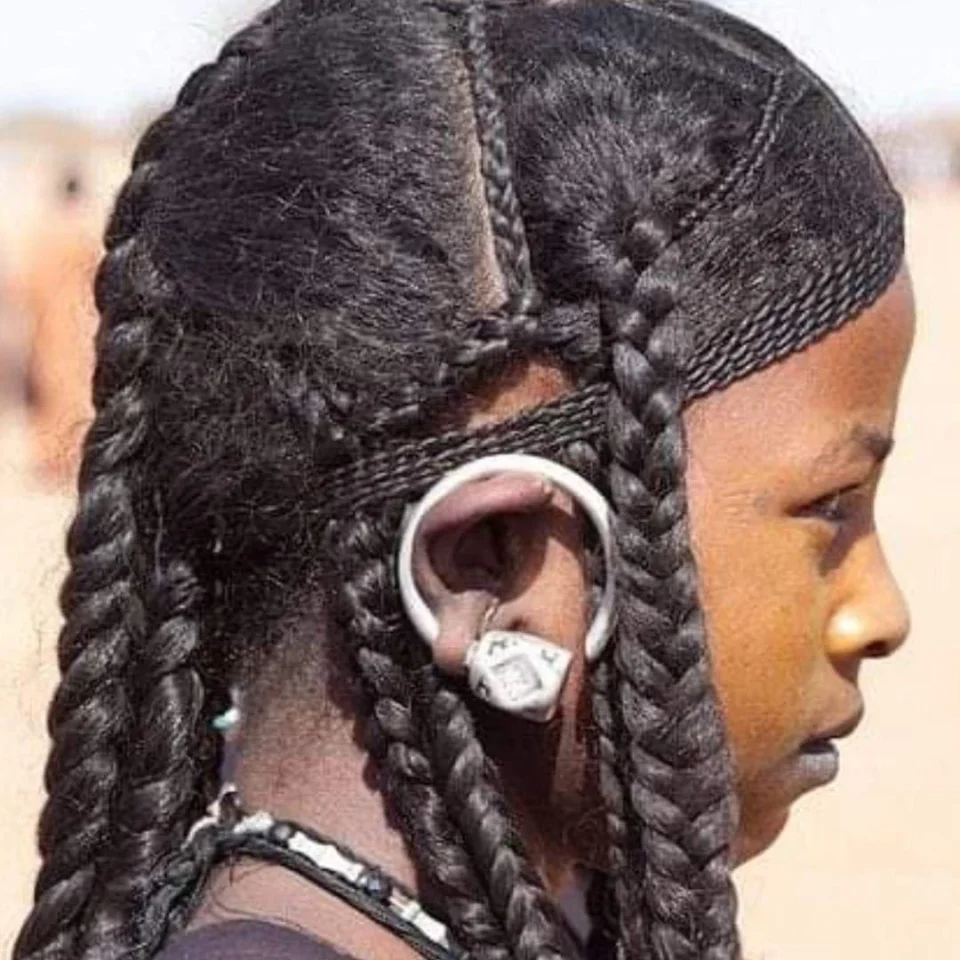Tuareg braids are a distinctive and culturally rich hairstyle originating from the Tuareg people, a Berber ethnic group native to the Sahara and Sahel regions of North Africa, including countries like Mali, Niger, Algeria, and Libya.
These braids are more than just a fashion statement; they are deeply embedded in the Tuareg’s cultural identity, symbolizing various aspects such as marital status, social standing, and regional affiliation.

Table of Contents
Cultural Significance of Tuareg Braids
Among the Tuareg, hairstyles, including braids, serve as important cultural markers. For instance, the Goffa is a traditional hairstyle worn exclusively by married women.
It features intricate braids interwoven with gold or silver adornments known as Kurkuru, reflecting the perceived affluence of the wearer’s family. Historically, this hairstyle was a symbol of prestige and was reserved for a select few.
The Goffa is often referred to as “the hairstyle of the queens,” emphasizing its association with dignity and honor within Tuareg society .
Traditional Styling Techniques
Creating traditional Tuareg braids involves meticulous techniques passed down through generations.
The process often includes:
- Preparation: Starting with clean, dry hair. Some individuals apply a small amount of hair gel to make the hair easier to work with.
- Sectioning: Dividing the hair into sections to create uniform braids.
- Braiding: Weaving the hair into intricate patterns, often incorporating beads, shells, or silver jewelry to add adornment and signify cultural identity.
- Finishing: Securing the braids and ensuring they are styled to reflect the individual’s social and cultural status.
These braids are not merely aesthetic; they are a form of storytelling and identity expression, reflecting the wearer’s personal and familial history.
Contemporary Influence
In recent years, Tuareg-inspired braids have gained popularity beyond the Sahara, influencing global fashion and hairstyle trends. Social media platforms like TikTok and Instagram showcase these styles, often blending traditional techniques with modern aesthetics. For example, videos and posts highlight the intricate braiding techniques and unique cultural styles associated with Tuareg hairstyles .
Conclusion
Tuareg braids are a beautiful representation of the Tuareg people’s rich cultural heritage. They embody more than just a hairstyle; they are a testament to the community’s traditions, values, and identity. Whether worn in traditional settings or adapted for contemporary fashion, these braids continue to honor and preserve the legacy of the Tuareg people.
Here’s an in‑depth look at hair style in Africa —past, present, and future:
Historical & Cultural Roots of Hair Style in Africa
- Cornrows: Dating back to at least 3000 BCE in the Sahara, cornrows were worn by various African cultures—not just for aesthetics but also to signify tribe, social status, age, and more.
- Bantu knots: Originating with Southern African Bantu-speaking groups, these coiled buns symbolized wealth and status. They work as protective styles and become glamorous curls when released.
- Braided crowns & symbolic styles: From the Edamburu crown braids of the Mangbetu in Congo to the Amasunzu style of Rwandan people—hairstyles have held deep meanings, marking marital status, maturity, and cultural identity.
- Goffa: A northern Malian/Songhai/Tuareg style, exclusively for married women, woven with gold or silver—literally a “crown of prestige”.
Traditional Techniques
- Fulani braids: Known for central cornrows extending to the sides, often adorned with beads, cowries, or rings—fertile ground for cultural celebration.
- Hair threading (Irun Kiko): A 15th‑century Yoruba/Igbo technique using threads to sculpt protective and artistic styles—resurfacing globally thanks to trailblazers like Busayo Olupona.
Modern Resurgence & Trends
- Protective braids remain hugely popular in 2025: knotless braids, box braids, Ghana/feed‑in braids, stitch and basket/spiral braids (Koroba and Kipetaka)—for both style and hair health.
Photo Credits: Electrical_Maybe_394